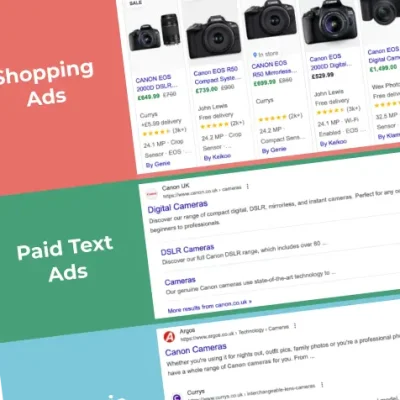With 2.14 billion people worldwide predicted to buy goods and services online in 2021, it’s no wonder everyone’s talking about the future of ecommerce. We’re dealing with an ‘ecommerce supercycle’, as termed by the major ecommerce platform Shopify, after seeing 10 years of ecommerce growth happen in just 90 days in 2020.
In the UK, internet sales account for over a third of all retail sales in the UK. Rapid growth, however, is decreasing, and will likely decrease further into 2021 (as global recession is set to reduce total retail spending). Yet it is still important to look at this boom to see what we can expect from consumer habits in the years to follow. M&S’s new mantra from last May, “Never the Same Again”, may have seemed a bit drastic, but it marked what we now know was a necessary transition of the company toward online business, and is one that we might all need to keep in mind in order to make it into the future market.
So, let’s take a look at online spending trends, and, most importantly, what you can do about them to help your business.
Technology is personalising the game
The implementation of personal information analysis is set to become a regular eCommerce trait. With the help of artificial intelligence and machine learning, ecommerce relies more and more on collecting user-journey data, including demographics, browsing habits, and buying history. This means that, using consumer data, machines can personalise the shopping experience to each user, uniquely.
For an example of how you can personalise your website, read more about Smart Content Loading in our blog.
The age-range of online shoppers is broadening
It only takes a pandemic to drive people to order online, and, once in the habit, you know how easy it is. This goes for all platforms, including social media. Before, social media ads tended to target the 25-54 age range group, but as our parents start to communicate on Instagram and the like (welcome, Boomers), online media advertising is becoming broader, and evermore targeted.
In fact, we are seeing rising numbers of both younger (16-24) and older (55-77) consumers purchasing online. The younger generation of e-shoppers have been shown to purchase high proportions of clothing, shoes and accessories, food deliveries, digital goods and accessories, cosmetics, and sports goods, while the older group tend to buy higher proportions of furniture, home and garden products, medical or dietary supplements, and books, as well as clothes and beauty.
So, get to know your market and who it’s made up of online – they’re all out there.
There’s growth in omnichannel shopping
Online, more and more channels are adapting to the rise in ecommerce. Social media platforms are the most significant, transforming from advertising platforms to having their own selling features, such as Instagram’s “shoppable post” feature.
All this talk of ecommerce is by no means to suggest you have to get rid of your brick-and-mortar store, though. Moreover, businesses are becoming experts at combining physical and online services to provide the best customer-service experience. This might be by introducing an ‘order online and pick-up in store’ feature, or by opening pop-up shops in different locations.
New space for sustainability?
The growth of ecommerce means that people now have the space to choose which brands they buy from, no longer being limited to the stores physically nearby them. With environmental concerns ramping up, sustainability and ethical consumption is becoming a game-changer in retail markets, as it is often a top priority for consumers.
How can you keep your business on track?
- Omnichannel presence. Make sure you’re advertising and selling your products across multiple channels, and ensuring the availability of suitable customer purchase touchpoints when needed.
- Responsive web design. Your site should be fully functioning across devices, be it mobile, desktop or tablet, so that you don’t miss potential leads.
- SEO. It’s always worth investing in Search Engine Optimisation tactics so that your website gets seen by potential customers, whether they find you through Voice Search, Google Ads, or as a result of a relevant keyword search.
Most of all, don’t lose hope. The rapid growth and change in ecommerce might seem daunting, but this is the best time for your business, big or small, to jump on the ride. Take the long view and tap in on the remarkable demand we are seeing for services online.
If you are looking for ecommerce expertise, get in touch.



